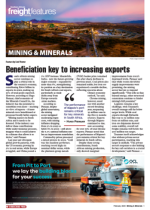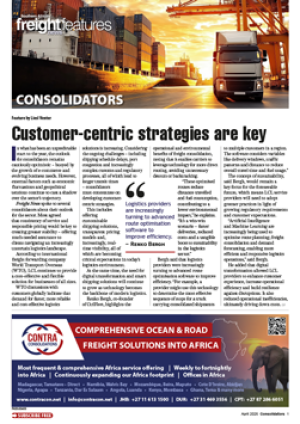As global economies become increasingly electrified, the demand for metals critical to power generation, transmission and storage is reaching unprecedented levels. Speaking at the Investing in African Mining Indaba, James Whiteside, head of corporate, metals & mining at Wood Mackenzie, emphasised that the world had hit a crucial inf lection point.“We are already seeing a rise in electrical intensity, driven by data centres, the energy transition and industrial sectors such as cement, iron ore, shipping, aviation and hydrogen,” he said. “Global power demand is expected to increase by 22% by 2030 and all indicators point to further growth beyond that.”He said that achieving global net-zero targets would require the grid to double in size. “By 2030, global data centres could account for 4% of total electricity demand. However, this is not solely about the energy transition – it is also about ensuring energy security.”Whiteside highlighted the role of Africa in meeting this demand, given the continent’s vast shares of critical metals such as copper, lithium, cobalt and graphite.“The demand for battery raw materials is accelerating due to the rise of electric vehicles (EVs) and clean energy technologies. However, supply constraints are emerging.“Copper is facing a significant deficit, with mines depleting and new investments lagging,” Whiteside warned. “By 2030, we expect a 28% supply shortfall in copper, while lithium will see a 10% deficit. Meanwhile, commodities like cobalt and thermal coal may experience surpluses.”Investment in new mining projects is failing to keep pace. “To reach net-zero by 2050, we need to invest $20 billion annually in copper and $8bn in lithium, but we have never hit these levels before,” he said. “Many mining houses have delayed final investment decisions, stretching supply lines even further.”He said with China extending subsidies for EVs, demand was set to rise, further intensifying pressure on the mining sector to supply essential minerals.Despite the challenges, Whiteside said Africa’s mining sector was on the rise. The continent remains significantly underexplored compared to regions such as Australia and Latin America. Africa’s share of mining capital expenditure (capex) should be sustained at more than 10% of the global total, driven by large-scale projects like Simandou – one of the world’s most ambitious iron ore developments taking place in Guinea.“Reinvestment rates in Africa are increasing, signalling corporate confidence. While capital discipline remains a focus, major mining companies are expanding their exploration footprints on the continent,” said Whiteside. “Greenfield projects are showing strong returns, especially in copper, lithium and gold, where over 60% of projects meet a 15% internal rate of return.”However, despite these promising trends, securing financing remains a challenge. “Compared to previous cycles, capital expenditure remains significantly lower. Inf lation, project delays, and evolving ESG (environmental, social, and governance) requirements have pushed up development costs. Meanwhile, buy-versus-build dynamics remain tightly balanced,” he explained.LV

